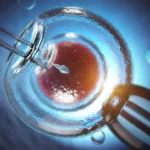
Introduction
The use of frozen donor embryos has become an integral part of assisted reproductive technology (ART), offering hope to individuals and couples facing infertility. Advancements in cryopreservation techniques, particularly vitrification, have significantly improved the survival and success rates of frozen embryo transfers (FET). This guide provides an in-depth look at the processes involved in thawing and transferring frozen donor embryos, including laboratory techniques, FET protocols, and factors influencing success rates.
Understanding Frozen Donor Embryos
Frozen donor embryos are embryos created using donor eggs and/or sperm, which are then cryopreserved for future use. These embryos are available through embryo donation programs and are an option for:
- Individuals or couples with infertility issues
- Same-sex couples or single individuals seeking parenthood
- Those wishing to avoid passing on genetic conditions
Embryo donation offers a unique opportunity to experience pregnancy and childbirth, even when using donor genetic material.
Laboratory Techniques: Thawing Frozen Embryos
The thawing process is critical to the success of FET cycles. Modern cryopreservation primarily utilizes vitrification, a rapid freezing method that prevents ice crystal formation, thereby preserving embryo integrity.
Vitrification and Devitrification
Vitrification involves:
- Rapid cooling of embryos to prevent ice crystals
- Use of high concentrations of cryoprotectants
Thawing, or devitrification, requires:
- Rapid warming of embryos
- Gradual removal of cryoprotectants and rehydration of cells
Studies have shown that vitrified embryos have high survival rates post-thaw, often exceeding 90%.
Laboratory Protocols
Embryologists follow stringent protocols during the thawing process:
- Warming: Embryos are quickly warmed to physiological temperatures.
- Dilution: Cryoprotectants are gradually diluted to prevent osmotic shock.
- Assessment: Embryos are evaluated for viability and development potential.
The expertise of the embryology team and adherence to standardized protocols are essential for optimal outcomes.
Frozen Embryo Transfer (FET) Protocols
FET involves transferring thawed embryos into the uterus. Protocols are tailored to individual patient needs and may include:
Hormone Replacement Therapy (HRT) Cycle
In an HRT cycle:
- Estrogen: Administered to develop the endometrial lining.
- Progesterone: Initiated preparing the lining for implantation.
- Timing: Embryo transfer is scheduled based on the duration of progesterone exposure.
Natural Cycle
For patients with regular ovulation:
- Monitoring: Ovulation is tracked using ultrasound and hormonal assays.
- Timing: Embryo transfer is aligned with the natural luteal phase.
Both approaches aim to synchronize the endometrial receptivity with the embryo development stage.
Success Rates and Influencing Factors
Success rates for FET using donor embryos are influenced by multiple factors:
Embryo Quality
Embryos are graded based on morphology and development. Higher-grade embryos have been associated with increased implantation and live birth rates.
Endometrial Receptivity
Optimal endometrial thickness (7–12 mm) and pattern are crucial for implantation. Some clinics utilize the Endometrial Receptivity Analysis (ERA) to personalize transfer timing.
Patient Factors
Age, underlying health conditions, and lifestyle factors (e.g., smoking, BMI) can impact success rates.
Statistical Outcomes
According to the Society for Assisted Reproductive Technology (SART), the implantation rate for thawed donor embryos is approximately 49.9%. Individual clinic success rates may vary.
Regulatory Guidelines
American Society for Reproductive Medicine (ASRM)
ASRM provides guidelines on:
- Donor Screening: Comprehensive medical and genetic evaluation of donors.
- Recipient Evaluation: Assessment of uterine health and overall readiness for pregnancy.
- Ethical Considerations: Informed consent and counseling for all parties involved.
Food and Drug Administration (FDA)
The FDA mandates:
- Donor Eligibility: Screening for communicable diseases.
- Tissue Handling: Standards for processing and storage of human cells and tissues.
Patient Experience and Considerations
Undergoing FET with donor embryos is both a medical and emotional journey. Patients are encouraged to:
- Seek Counseling: Professional support can aid in coping with the emotional aspects.
- Stay Informed: Understanding the process enhances preparedness and confidence.
- Maintain Health: Adhering to medical advice optimizes outcomes.
Conclusion
Thawing and transferring frozen donor embryos is a well-established procedure with favorable success rates. Advancements in laboratory techniques and personalized protocols have contributed to improved outcomes. Patients considering this option should consult with their fertility specialists to determine the best approach tailored to their individual needs.
Note: This article is intended for informational purposes and does not substitute professional medical or legal advice. Always consult with qualified professionals when making decisions.

Dr. Veera Saghar
As an Egg Donor Coordinator, she plays a critical role in our company. Her background as a medical graduate from ISRA UNIVERSITY in Pakistan provides us with a solid foundation in the medical sciences. She has seven years of clinical experience practicing in the USA. This has given her firsthand experience when collaborating with patients and their families.
She is responsible for managing the process of egg donation from start to finish. We identify and screen potential egg donors.





